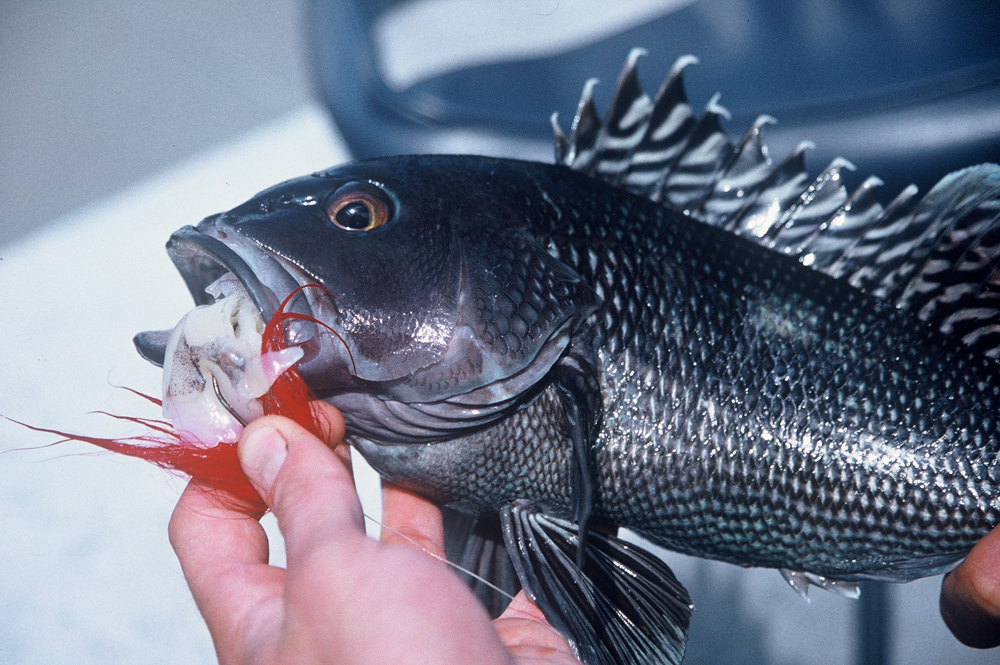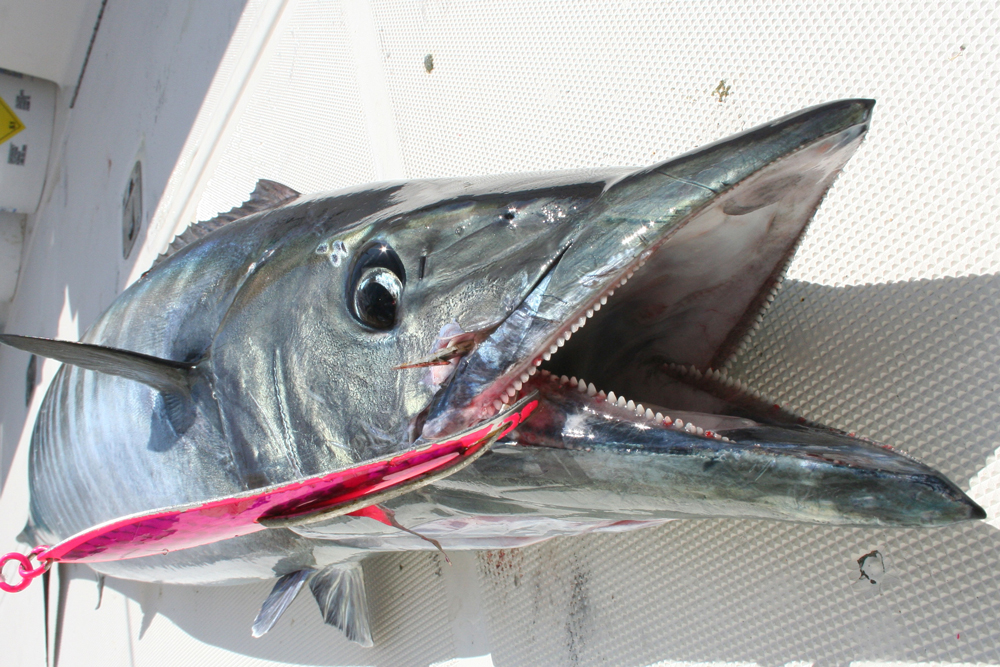Choosing the best lure color on any given day is no easy task—what worked yesterday won’t necessarily be the best choice today, and what worked at daybreak won’t necessarily be the best choice an hour after the sun clears the horizon. So, how will you choose between chartreuse and chocolate? What dictates picking pink versus purple? As you make the call, always remember to keep these five important factors foremost in your mind.

1. Water Color
When it comes to picking out lure color, the general rule of thumb to live by when making your initial selection is to match your lure color to the color of the water. In tannic-stained lakes and rivers, root-beer is the go-to starting point. In clear blue waters of the open Atlantic, blue or blue/white lures should always be in the water. And, you Chesapeake Bay anglers may notice, in greenish waters Chartreuse is commonly a killer. Hence the old Bay saying, “if it ain’t chartreuse it ain’t no use.”
But remember that matching lure color to water color is just a starting point. As various other factors—see below—come into play, the best color to use at any given time will shift farther and farther from an identical lure-to-water color match. So while you should use this rule of thumb to initially choose your lure’s color, consideration of other factors and experimentation with color choice as you fish is a must.
2. Depth of the Fish
Depth plays an important role because as a lure falls deeper and deeper, its colors begin to fade. Those with the longer wavelengths go first, red being the initial one to fade with some loss in as little as five feet and a complete absence of color at 15 feet or so. Orange disappears next, at around 25 feet. Greens and blues last a bit longer, with some coloration still visible at 60 or 70 feet. All the while, remember that this isn’t based solely on horizontal depth; distance through the water is distance through the water, so a fish 10 feet away from a red lure, at the exact same 10 foot depth as that lure, is really looking at a lure that’s exposed to 20 feet light-travel—and will see no color whatsoever. Those colorless lures appear as a dull gray, to the fish’s eyes (at least, that’s what all the scientists seem to agree upon, and that’s how they look to our own eyes while underwater). And this is not only important because you want to choose a visible color when fishing deep, but also because you need to consider color-contrast.
Anyone who’s been fishing for years and years has certainly noticed that the above notwithstanding, there are times when you’ll catch plenty of fish from 50 or 60 feet of water on a red lure. What gives? This is where contrast becomes an important factor. Color contrast in a lure is nearly always a good thing, as it improves the lure’s visibility. But when a lure loses its coloration with depth and its visibility is reduced that contrast becomes even more vital. As an angler, you need to remember this at all times. Choosing a white jig head to go with a pink body, for example, may not be the best choice because as that lure sinks, what seemed to have great contrast above the water’s surface has little or no contrast at depth. A green or blue head matched with that pink body, however, will maintain much better contrast as it sinks.

3. Brightness of the Sky
Any angler worth his salt already knows that light levels have a huge impact on how the fish are feeding. Sunrise, sunset, and heavy cloud cover all play a role, and similar to matching lure color with water color, the basic rule of thumb regarding light level is to match lure color to light level. In low-light conditions, dark colors often become surprisingly effective. Dark browns and especially black comes into play when the sun is down. On dark cloudy days and in ambient light, deep purple can be shockingly effective. And the opposite is true in bright light, when white often becomes the color of choice.
Brightness levels also play a role in how effective a lure’s finish and reflectiveness is. Much of the time flashy spoons produce in bright sunlight, because they reflect this brightness for long distances. But in dull, low-light conditions they merely reflect the dullness of the light. In this case, finishes and colors that create a silhouette and stand out against the available light, rather than trying to reflect it, are usually a better choice.
4. Fluorescence
Another key factor you need to take into consideration is the fluorescence of a lure. Many species of fish have UV receptors in their eyes that go well beyond those in our own eyes, and as a result, they can “use” UV rays that we can’t even see. This becomes an important consideration when the sun is high in the sky, but due to clouds and/or fog, visible light levels are low.
The sun’s UV rays are still penetrating the clouds, and although we may not be able to take advantage of it, the fish can—if your lure has fluorescence, which is activated by those UV rays. In most cases, UV reflective fluorescent is added to the paint on a hard-bait. Some soft plastics do have fluorescence baked in, but in any case it can always be added. There are several “dips” or paints designed for use with soft plastics, like Spike-It, which offer fluorescent formulas. Though some of us detest this stuff for its uncanny ability to colorize everything from finger-tips to seat-cushions, on dark cloudy days, it can be an important addition.
5. Match the Hatch
Finally, one should always consider what the fish are feeding on and think about matching the hatch. That said, as compared to profile and size, color matching the hatch is much less important. When stripers and blues are chewing on bay anchovies, for example, they’re likely to eat just about anything of the same size and shape regardless of color. In fact, at times it seems like a color that specifically does not match the predominant baitfish is the ticket to success. That said, there will also be times when closely mimicking the color of the bait becomes paramount to success.
Now read back through everything above, and you’ll probably notice that there are plenty of contradictions. Matching the lure color to the water color, but also picking purple, much less fluorescent purple, because it’s cloudy and the light levels are low? Choosing a flashy gold spoon in bright daylight, but also picking olive green because that’s the color of the predominant bait? Obviously, this simply isn’t possible. That’s why we keep stressing that each of these factors merely provides a starting point—a basis for your further experimentation. And experimentation is indeed key. A smart angler will use these five factors to choose an initial two or three colors, and make sure that different anglers on board are using different options. One fish caught is then chalked up to chance, two fish is an indication, and a three-to-one ratio for any given color or pattern is a sure sign that everyone aboard should switch to the color that’s catching.
